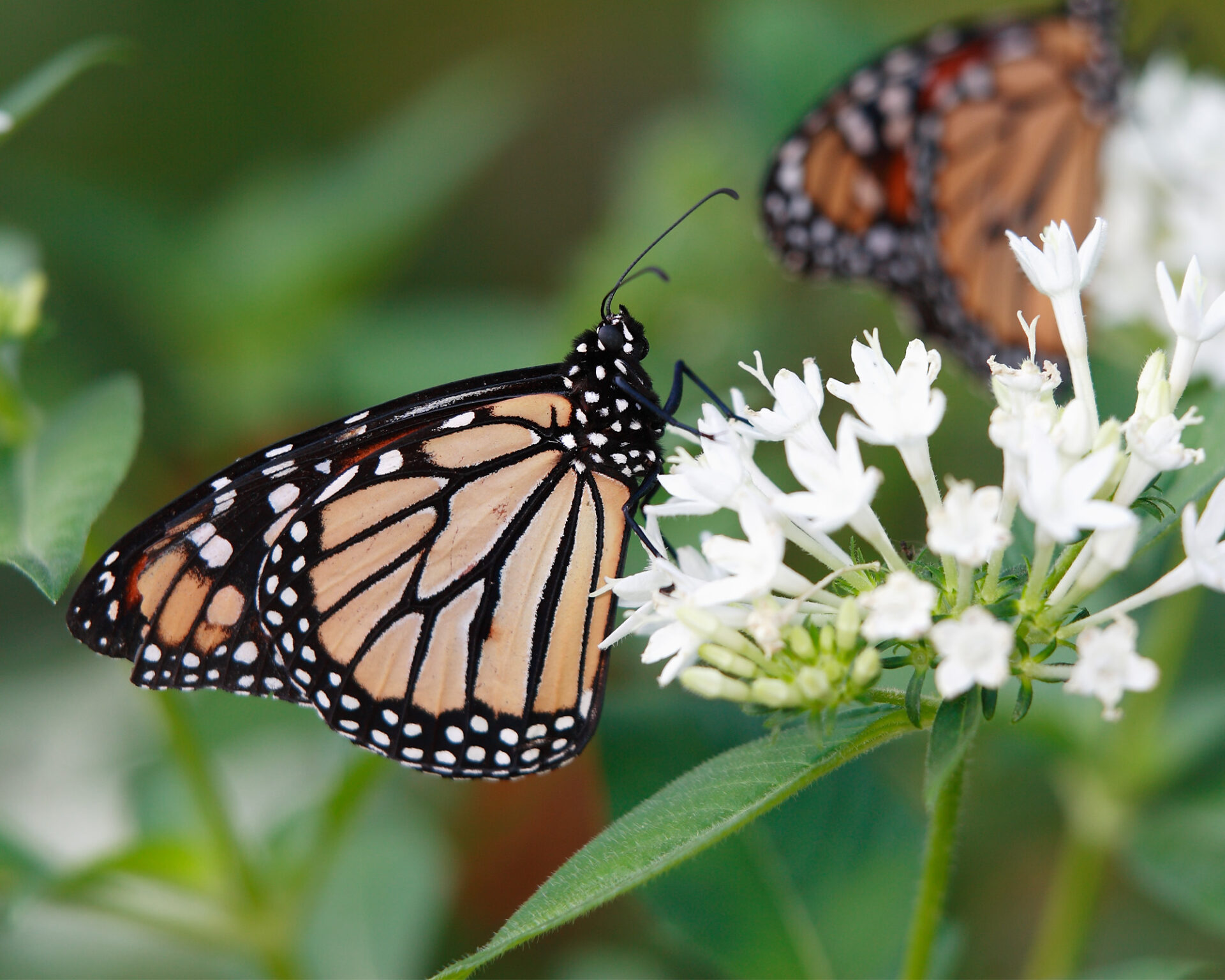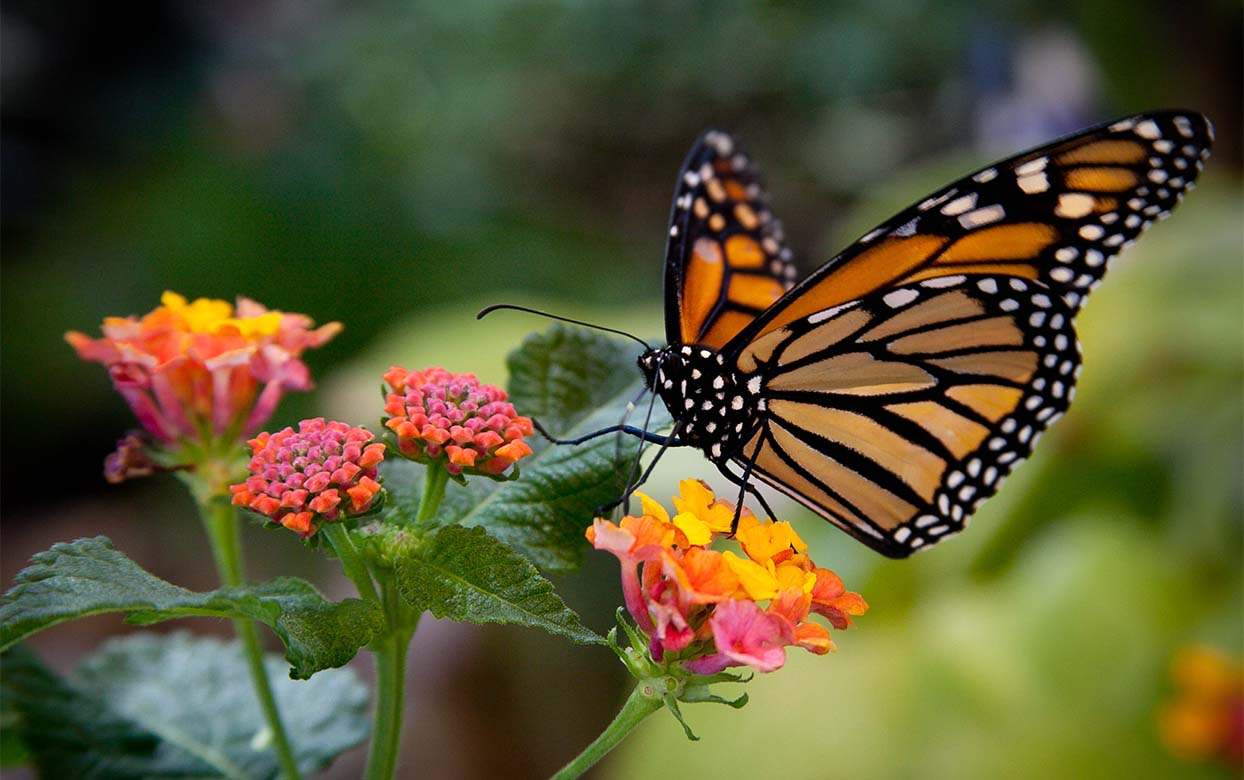Have you seen monarch butterflies flying around your yard or favorite pollinator habitat? They are back for the winter season and in great numbers this year!
Central and southern Arizona has monarchs roughly from October through March — it is too hot in the summer for them. What are they doing here? Don’t monarchs migrate to Mexico? Most monarchs migrate to Mexico, and some to California. We also have a small overwintering population in the state as well. Why? We don’t know.

It may have to do with our native milkweeds retaining their leaves in the winter or it may be our milder climate. Monarchs generally do not mate or lay eggs while overwintering, but here in Arizona, we see some evidence that they are breeding in the winter. The key point here – there is a lot we do not know about monarchs in Arizona.
That’s where you can help! You have probably heard from the Garden’s Great Milkweed Grow Out initiative about the importance of milkweed and how you can help monarchs by adding milkweed and native nectar plants to your yard. Now, you can take it a step further and help the Garden better understand monarchs in Arizona.
Dr. Kim Pegram and Natalie Melkonoff from the Garden’s pollinator conservation team launched a community science project, Desert Refuge, last year in collaboration with USA-National Phenology Network (USA-NPN). With an easy-to-use app (Nature’s Notebook from USA-NPN), anyone with a milkweed plant can track what is happening.

It only takes about 10 minutes once a week. Participants can document what is happening with their milkweed, including observations of monarch caterpillars on milkweed or monarch butterflies flying around your yard. All of this is explained on the website, www.usanpn.org/nn/DesertRefuge, along with some recorded training for more detail.
We need as many people to participate as possible to help the Garden better understand what is happening with monarchs in Arizona. Last year, with data from our Desert Refuge participants, we saw the presence of monarch caterpillars all winter in central and southern Arizona. This was rather unusual. Was last winter milder and so they kept breeding? Did the caterpillars stay in the caterpillar stage longer? We don’t know and we need more people to help us find out.
Be a scientist in your own backyard! Help us learn more and better understand monarchs in Arizona with the Desert Refuge community science program.
Desert Refuge is supported by Monarch Joint Venture and USFS International Programs.
